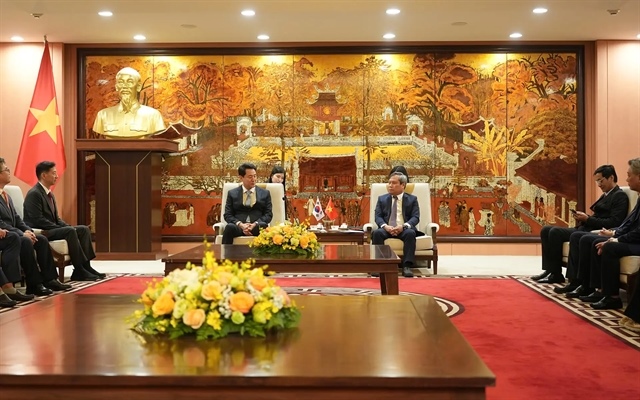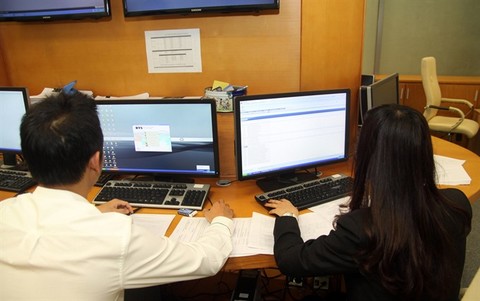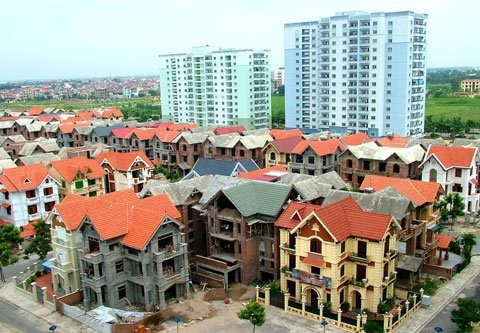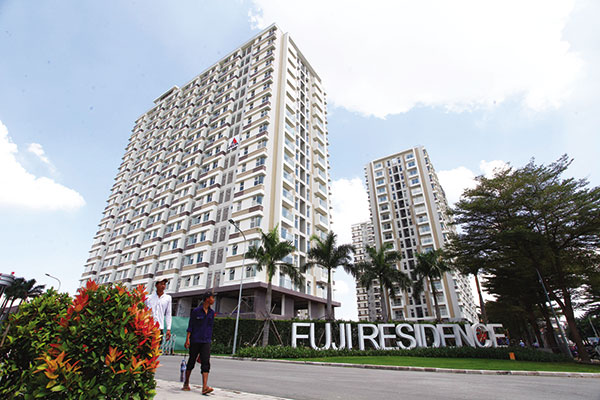Green buildings An indispensable trend
Green buildings An indispensable trend
Green building has become a growing trend worldwide and real estate developers in Vietnam have begun to pay heed. This segment has great potential for development amidst the still limited presence of green buildings in the country as locals increasingly look for a better living quality.
The Right approach
Compared to other countries, Vietnam reported a modest number of certified green buildings at about 60 as of the end of April 2017. Besides, awareness of green buildings remains limited, even on the side of property developers.
To many people, green buildings generally mean a project featuring many green trees, which is not entirely wrong, but less than adequate in expressing all constituent factors and their significance.
According to the Vietnam Green Building Council (VGBC), green buildings are those posting high efficiency in energy and material usage, minimising adverse impacts on the environment. They are designed to significantly reduce the harmful impacts of construction on people’s health and the natural environment through the effective use of energy, water, and other natural resources. It aims to protect people’s health, boost labour productivity, minimise waste and pollution as well as harm to the environment.
A work is recognised as a green building when it satisfies a combination of factors geared towards sustainable development, energy and water usage efficiency, using sustainable materials, and meeting safety standards.
There exist diverse green building certification systems worldwide, such as LEED (Leadership in Energy and Environmental Design), EDGE (Excellence in Design for Greater Efficiencies), and Green Mark, of which LEED (developed in the US) has proven the most comprehensive, suiting projects seeking global brand recognition. LEED standards were designed with construction markets in developed countries in mind, rather than those in developing countries.
EDGE is a certification system developed by the World Bank Group’s International Finance Corporation (IFC), and focuses on water and energy factors in materials. It fits projects seeking to minimise the use of natural resources.
Meanwhile, Green Mark, a green building certification system created by Singapore, incorporates standards that mostly suit construction markets in developing countries.
Vietnamese green building standards
Many domestic firms are applying Vietnamese green building standards (LOTUS) compiled and enacted by VGBC in 2009. LOTUS was compiled by leveraging different international green building certification systems, such as LEED, Green Star, BREEAM, GBI, and Green Mark. It aims to establish a separate set of standards for Vietnam, gearing the domestic construction sector towards the economical use of natural resources, presenting and promoting environmentally friendly construction activities. The LOTUS standards aim to fit Vietnam’s construction practices, state regulations, and the country’s climatic conditions.
LOTUS is divided into two groups: LOTUS certification system and LOTUS certification system for small-scale projects. Generally, LOTUS consists of 10 components: energy, water, materials, ecology, waste and pollution, health and comfort, adaption and mitigation, community, management, and innovation.
Perception-related challenges
Albeit a common trend worldwide, green buildings remain modest in number in Vietnam. As of April 2017, Vietnam was home to 60 certified green buildings after nearly a decade of deployment, whereas in Malaysia the number of certified green buildings reached 125, in Taiwan 500, and in Singapore nearly 1,200 as of 2015.
According to chairman of the Vietnam Real Estate Association Nguyen Tran Nam, as green buildings are significant to modern life and have become an indispensable demand, it is a must for developers to follow the trend. In the coming time, the association will team up with relevant authorised agencies and businesses to raise the number of certified green buildings in Vietnam.
Doan Van Binh, chairman of CEO Group, assumed that as Vietnam incurs serious consequences of climate change and rising sea levels, green building development could bring enormous benefits to the economy, society, and the environment. The number of green buildings, however, remains limited, particularly in the housing segment.
According to industry experts, the modest number of green buildings came from limited access to information related to green buildings. The lack of adequate information about the actual construction costs of green buildings has misled developers, making them reluctant to adapt such practices.
“Many developers and contractors said that in the past when they thought of going green for their projects, consulting firms told them that the cost of green buildings might be 20-30 per cent higher than conventional buildings—sufficient enough for them not to pursue this line of development. Inadequate information, plus the fact that local developers do not widely approach the skills, design, and construction technology related to green buildings, has caused multiple hardships for the initiative in Vietnam,” said Do Ngoc Diep, a green building specialist at IFC.
Sharing his views, Nguyen Cong Thinh, deputy director of the Ministry of Construction’s Department of Science, Technology and Environment, said that compared to initial investment, the additional costs of a green building come at 5 per cent maximum, and the capital can be recovered swiftly. It is not as costly as many people might think.
An inevitable trend
Despite facing numerous obstacles, positive signals were spotted in respect to green building development in Vietnam. A recent global corporate social responsibility (CSR) survey by market research firm The Nielsen shows that 64 per cent of respondents in the Asia-Pacific region said they would be willing to spend more acquiring sustainable functions compared to the 50 per cent in 2012.
Trinh Tung Bach, director of Research and Development at Capital House, said, “We face myriad challenges in going green for our projects. Initially, we did not know where to begin, and we were learning on the go and tackled difficulties as they came up.”
Bach added that going green does not only relate to construction, it also relates to planning and operation, with the latter being the most important to ensure making the most of the advantages.
Vu Thanh Thuy, head of MIK Group’s Marketing and Communication Division, said, “In recent years, green building design has captured growing attention in the field of architecture. As green factors contribute to enhancing the quality of life, it has grown into one of the modern architectural standards. Projects having modern design while satisfying eco requirements are very appealing to customers.”
An increasing number of domestic and foreign developers choose to go green with their projects in Vietnam. Recently, Japan’s Mitsubishi has joined hands with local partner Phuc Khang Construction and Investment Corporation to form a joint venture for green project development, with the initial seed capital of $30 million. These positive signals point towards a rosy development prospect for green buildings in Vietnam.






















